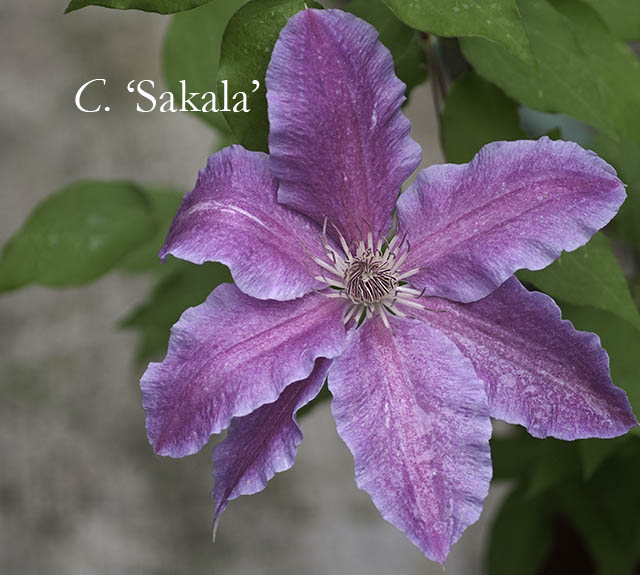Here is some of the Clematis Queen’s helpful advice to aid you in dealing with this ailment.
An Ounce of Prevention
With a little bit of prevention and luck, you can increase your chances of steering clear of stem rot. The important thing, however, is knowing how to avoid it.
Buy strong healthy plant(s). Regularly feed your clematis and always sanitize your clippers with horticultural disinfectant when pruning your clematis. These tactics help strengthen the clematis’s immune system, thus increasing the odds against suffering a bout with this bad bug.
The Clematis Queen’s Over-the-Counter Treatment
Since this stem rot fungus is contagious, good hygiene, as I just said, is extremely important. If your clematis succumbs to stem rot, arm yourself with Physan 20 (horticultural disinfectant), seaweed extract and patience.
Rx for Clematis that has Partially Crashed:
Make a Physan 20 spray (1/4 teaspoon and 2 cups of water in spray bottle). Remove all of the infected parts of the clematis and dispose of them in a plastic bag. Sanitize your clippers after each cut using the Physan 20 spray. After pruning all of the infested stems and leaves completely spray any healthy remaining parts with the Physan 20 spray.
It is always prudent to apply seaweed extract monthly until you see some new growth.
Rx for Clematis that has Completely Crashed:
Make a Physan 20 drench (2 teaspoons of Physan per one gallon of water in watering can). Cut back the infected plant and dispose of the cuttings in a plastic bag. Then sanitize your clippers by dipping them in the Physan 20 drench. Irrigate the ground nearby thoroughly with the Physan drench because this will prevent the spread of spores.
Do NOT fertilize your clematis. Instead, use an application of seaweed extract once a month until your affected plant reappears. As soon as your clematis returns to normal it is all right to resume your regular feeding program.
